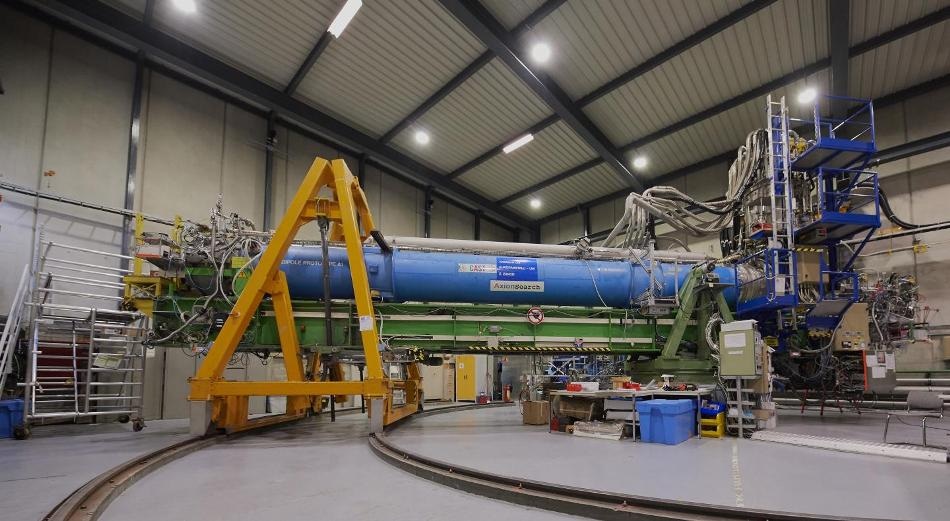May 24 2017
Axions are particles whose hypothetical existence was introduced in 1977 by Roberto Peccei and Helen Quinn. The particles have been the talk of the town lately because their existence could largely explain so-called dark matter.
 The strong magnet can be found in the blue pipe of the CERN Axion Solar Telescope (CAST) with which researchers seek to capture axions from the sun. (Credit: CERN)
The strong magnet can be found in the blue pipe of the CERN Axion Solar Telescope (CAST) with which researchers seek to capture axions from the sun. (Credit: CERN)
In order to make a solid claim, researchers have been measuring the interaction between axions and photons. A team of international scientists from the project CERN Axion Solar Telescope (CAST) at the European research center CERN in Geneva, Switzerland, including Prof. Dr. Horst Fischer from the Institute of Physics at the University of Freiburg, have set strict limits to the probability that axions turn into photons. They have presented their findings in the latest issue of Nature Physics.
In the search for axions since 2003, the project group has directed its telescope toward the sun every morning and evening for 90 minutes each. The telescope has a magnet that CERN employees originally built for the Large Hadron Collider. According to the theory, the sun is one of those places in which axions form. Should they be captured by the telescope, the magnetic field would turn them into photons. The researchers could measure them with highly sensitive and extremely low-noise sensors.
Only after it is determined that axions turn into photons can researchers determine the portion of particles in dark matter. Based on the published work, which draws on data collected from 2012-2015, the team has found no evidence of solar axions. The team has set the strictest of limits regarding the intensity in the interaction between axions and photons on this basis. The result has direct consequences for a deeper understanding of various astrophysical anomalies such as the spread of high energetic gamma rays in the universe or efficient stellar heat dissipation. Presently the experiment is being redesigned to prove residual axions from the time of the Big Bang as well as particles of dark energy in the future.